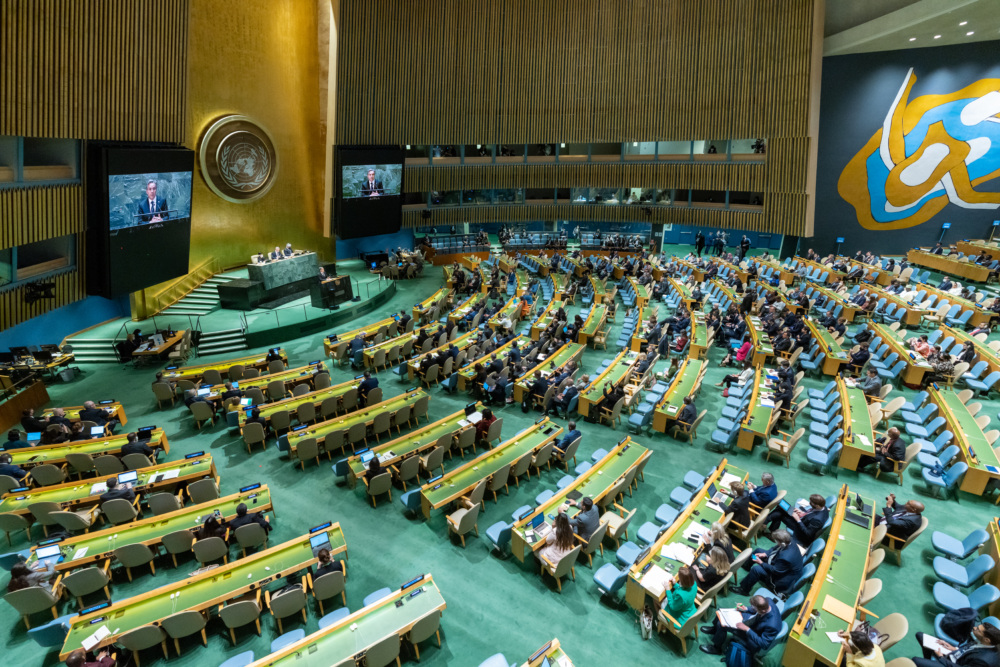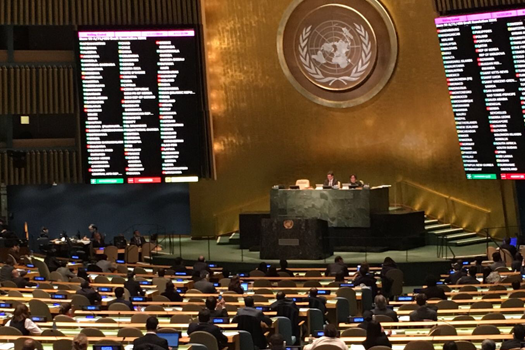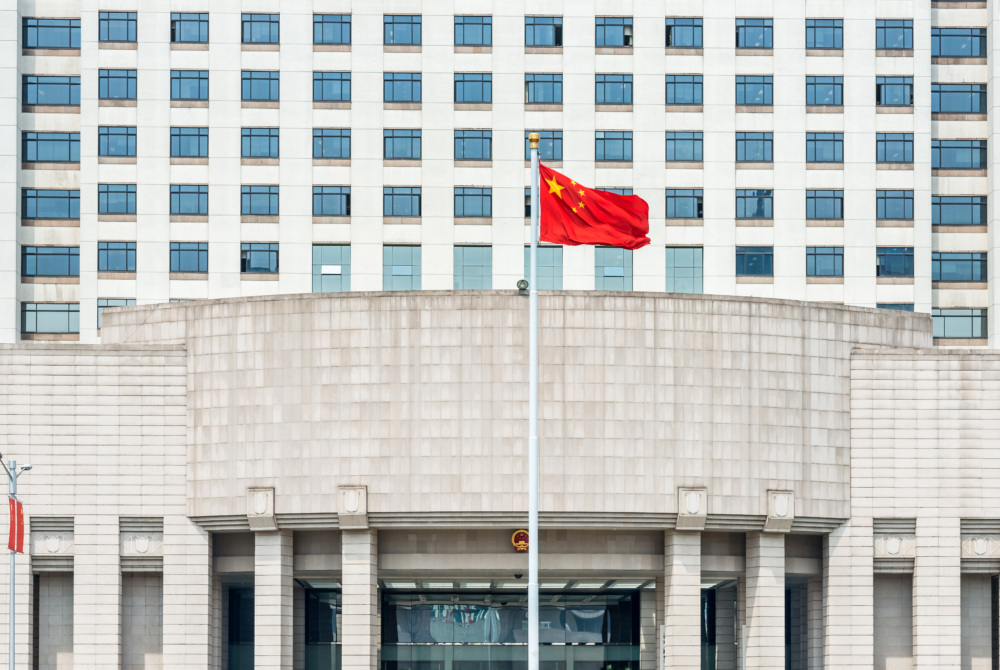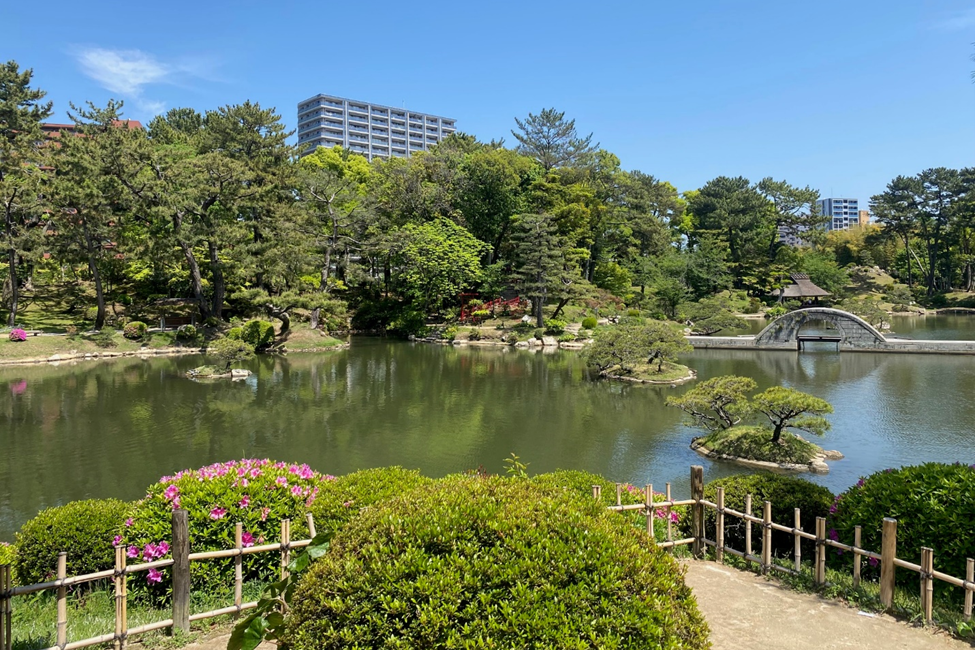This post was written by Payson Ruhl, an intern with NTI’s Global Nuclear Policy Program. Originally from New Jersey, she graduated from Claremont McKenna College in 2019 with a degree in International Relations.
A good example of positive disruption. A forceful shakeup of the discourse. An energizing movement.
This is how Beatrice Fihn, the internationally acclaimed advocate for the elimination of nuclear weapons, and fellow experts described the nuclear weapons ban treaty—formally the Treaty on the Prohibition of Nuclear Weapons (TPNW)—at a recent event to mark its 50th ratification and upcoming entry into force.
The Carnegie Endowment for International Peace hosted the November 13 online event, bringing together Fihn, executive director of the International Campaign to Abolish Nuclear Weapons (ICAN), the Nobel Peace Prize-winning organization that has been heralded for its campaign to eliminate nuclear weapons; Togzhan Kassenova, fellow at the Carnegie Endowment; and Zia Mian, co-director of the Program on Science and Global Security at the Princeton School of Public and International Affairs to discuss the TPNW’s entry into force on Jan. 22, 2021. George Perkovich, vice president for studies at the Carnegie Endowment, moderated the conversation.
The treaty, which was adopted by 122 states in 2017, prohibits states parties from engaging in any nuclear weapons-related activity, including using, threatening to use, or transferring nuclear weapons, or stationing other countries’ nuclear weapons on their territory, or assisting in any activity prohibited by the treaty. Accordingly, if a nuclear-armed state accedes to the treaty, it must eliminate or remove its existing nuclear weapons. Notably, no nuclear-armed state participated in the negotiation of the TPNW, nor has any nuclear-armed state signed it. The TPNW also requires that states parties commit to provide assistance to individuals affected by nuclear weapons use and testing as well as undertake environmental remediation efforts.
The event speakers generally agreed that the TPNW’s entry into force would apply external pressure to nuclear-armed states to accelerate progress in disarmament. In the words of Fihn, the Treaty will “change the dynamics around nuclear weapons” by galvanizing popular attention, creating a movement, and broadening the scope for discussions on the issue. Kassenova said that she views the TPNW as “a very good example of positive disruption.” She touted the intangible benefits of the TPNW, including the “forceful shakeup of the discourse” that it brings about, noting that the treaty gives a voice to those states that “never before felt they had a say in” global nuclear politics. Mian added that by institutionalizing the humanitarian, legal, moral, and ethical arguments for eliminating nuclear weapons in a legally binding agreement, the TPNW creates “new institutional possibility” for altering the dynamics of what he describes as the “ambivalence” of nuclear weapons states toward the nuclear issue.
Another positive outcome of the TPNW, the panelists argued, is the shifting of norms around the use of nuclear weapons. Whereas arms control agreements aim to shrink and limit nuclear arsenals while still recognizing that nuclear weapons will continue to exist, humanitarian agreements like the TPNW actively stigmatize and delegitimize nuclear weapons. Fihn spoke of the role of “peer pressure” among governments in setting expectations and changing states’ behaviors. Recalling how existing conventions—including those banning biological and chemical weapons, land mines, and cluster munitions—have successfully altered states’ behavior over time, Fihn pointed to the TPNW as “part of that wider strategy to constantly narrow down the room of maneuvering for states” in warfare.
On a national level, she said, the treaty aims to “increase [the] burden of having nuclear weapons” in order to create an incentive for states to disarm. Citing the success of norms set by other disarmament agreements in prompting financial institutions to divest from companies producing the weapons in question—even those operating within states not party to the treaties—Fihn suggested that proponents of disarmament can work with the TPNW to put pressure on nuclear-armed states from the bottom up.
Perkovich pressed the panelists on whether the effects of the TPNW’s entry into force would be felt by states that are not currently having discussions on disarmament, including nondemocracies. Fihn argued that peer pressure between governments can create expectations for democracies and nondemocracies alike. She also observed that most countries that possess nuclear weapons or rely on them for national security are democracies, whereas many states that have rejected nuclear weapons are nondemocracies.
Mian expanded on Fihn’s point, remarking that it took mass mobilization by civil society and local governments to “force” the Reagan administration to attend the 1986 Reykjavík summit between the United States and the USSR. Gorbachev attended the summit despite the absence of a similar movement in the Soviet Union. Perkovich pushed back on Zian’s point, highlighting that a key factor at play in decision-making leading up to the summit was "regime change” in the USSR. He argued that regime change was also behind disarmament in South Africa and Argentina’s decision to abandon its fledgling nuclear program. In response to Fihn, Perkovich countered that the number of democracies that rely on nuclear weapons for security is comparatively high because many of these states are allies to nuclear-armed states. Countries like China and Russia have significantly fewer allies.
The speakers also discussed an oft-raised criticism of the TPNW—its lack of a comprehensive verification regime. The TPNW requires only that states parties keep in place their current International Atomic Energy Agency safeguards agreements, a provision which has prompted the United States to argue that the Treaty “turns back the clock on verification and disarmament.” Kassenova acknowledged that criticism of the TPNW’s lack of a verification regime is valid but emphasized that the treaty should not be seen as “the all-encompassing treaty” but rather as a first step. A second step, such as a convention, would address the technical details of verification and enforcement. Fihn added that procedures for verifiably eliminating nuclear weapons in nuclear-armed states that accede to the treaty would have to be determined on an ad hoc basis as such measures would necessarily differ from country to country. None of the panelists directly addressed other concerns TPNW critics have raised including meeting and implementation costs and the relationship between the TPNW and the Nuclear Non-Proliferation Treaty (NPT).
Exactly what impact the TPNW will have on the global nuclear landscape will remain unclear for some time. What is clear is that many states and a growing portion of civil society are increasingly frustrated with the status quo. The entry into force of the TPNW is a call for all countries to work toward eliminating this existential threat.




